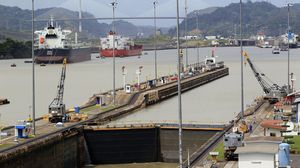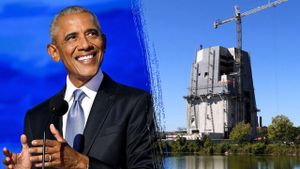Recent advancements in space exploration have been highlighted by significant missions from Japan and the United States, as well as the festive activities of astronauts aboard the Chinese space station. These developments mark milestones not only for their respective countries but also for global scientific collaboration.
Japan has successfully launched the Michibiki No. 6 satellite as part of its Quasi-Zenith Satellite System (QZSS). This satellite enhances Japan's positioning capabilities, aiming for centimeter-level accuracy. Since the first Michibiki satellite launch back in 2010, Japan's government has planned to expand the system, with aims to deploy up to seven operational satellites by fiscal year 2025 and potentially increasing to 11 to boost reliability. The cost of developing Michibiki No. 6 and two additional satellites is estimated at around Yen 100 billion, reflecting Japan's commitment to operate independently of foreign GPS systems. According to the Japan Aerospace Exploration Agency (JAXA), this newest satellite will play a key role in achieving those goals.
Parallel to Japan’s advancements, American aerospace company SpaceX has now completed its 200th orbital launch from Vandenberg Space Force Base. A Falcon 9 rocket lifted off at 3:02 p.m. PST, deploying satellites for its Starlink program, which continues to expand global internet coverage. The mission succeeded not only with the satellite's delivery to low Earth orbit but also with the first stage’s graceful return to Earth, landing on SpaceX’s drone ship, "Of Course I Still Love You." With 14 Falcon 9 missions already carried out this year alone, SpaceX has emphasized its focus on maintaining reliability and operational efficiency.
Meanwhile, aboard China’s Tiangong space station, astronauts have combined their scientific endeavors with cultural celebrations. The crew, having arrived on October 30, 2024, marked their second Spring Festival in orbit this year, making it memorable with unique activities and connection to loved ones back home. Astronaut Cai showcased the rigorous training processes necessary for their tasks, saying, "These exercises have significantly improved our ability to handle unexpected situations, allowing us to work more efficiently and safely," as reported by Xinhua News Agency. The importance of these preparations has been underscored during their time aboard the space station, particularly during extravehicular activities (EVAS).
Fellow astronaut Song Lingdong shared his emotional experience during his first EVA, stating, "Before my first EVA, I imagined what it would be like, but nothing prepared me for the moment I opened the hatch and saw Earth. It was breathtaking." His description offers amazing insight not just to the mission experience but to the grandeur of space. Song added, "Climbing on the module walls, I felt as if I was walking on clouds," reflecting the surreal feelings of astronauts working above Earth.
Wang Haoze, China's first female engineer onboard the space station, expressed joy and pride at witnessing the beautiful Earth from above, sharing, "Seeing our homeland from space fills me with excitement, pride, and longing." This sentiment echoes among the astronauts who connect their scientific work with personal reflections and human emotions, bridging their experiences. The crew's daily activities include strict exercise regimens to combat the effects of prolonged weightlessness and routine tasks involving advanced scientific research.
With the concentration on efficiency and safety, the astronauts engaged actively, conducting investigations on human brain organoids and performing material exposure tests within the station's extreme environment. Their workload does not exclude light-hearted celebrations during festive periods. They made time to share congratulatory messages and record videos for their families back home, instilling warmth and camaraderie, even when separated by vast distances.
Overall, these recent developments—from Japan's satellite ventures to China's space station celebrations and SpaceX’s continued success—indicate not only technological achievements but also the human spirit's resilience and curiosity. They demonstrate the significant progress being made across various nations and the collaborative outlook fostering future missions and innovations within the ever-expanding universe of space exploration.



